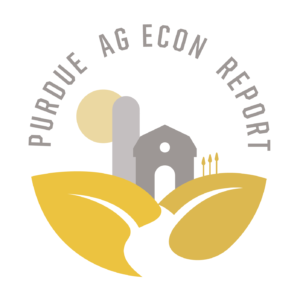The Economic Impact of Hog Production in Indiana, 1991
August 17, 1994
PAER-1994-06
Kevin T. McNamara, Associate Professor and Kenneth A. Foster, Assistant Professor
Pork production is an important component of Indiana’s economy. Total Indiana hog production was 1,742,315 thousand pounds in 1991 (Indiana Agricultural Statistics), an increase of about 5% over 1990 pro-duction and 11% over 1985 production. Indiana’s 1991 hog production had an estimated value of $828.1 million.
Hog production in Indiana stimulates income and employment that impacts almost every sector of the state’s economy through linkages to both input suppliers and households. Pork producers purchase feed, land, facilities, equipment and a variety of business services in order to produce hogs. These purchases generate income and employment growth in the economy as suppliers hire and pay people to produce the inputs they sell to pork producers. The pork industry also generates direct income and employment by hiring people to manage hog production facilities. These impacts are called indirect impacts.
The economic impact of hog pro-duction is spread further through the economy as households that earn income from hog production make purchases of goods and services for household consumption. The economy experiences further impacts as households. These household spending impacts are called induced impacts. Indiana’s 1991 hog production stimulated a total income impact of $123,883,760 and total employment of 11,226 jobs.
The $828.1 million in Indiana pork production in 1991 stimulated an estimated $1,392,284,500 in total economic activity through the purchase of goods and services from allied industries and through the family purchases of households that earn income from pork production.
Sectors that were impacted by pork production include $52,832,780 in the grain production industry, $8,993,166 in machinery production, $361,809 in chemical and allied product production and $422,333 in construction. The pork production sector also supplied itself with an estimated $124,215,000 in pigs and hogs for production of the 1991 crop. Hog producers purchased $49,222,264 in financial, real estate and insurance services, contracted an estimated $26,300,456 in transportation services and purchased $24,205,363 in supplies from wholesale and retail suppliers.
